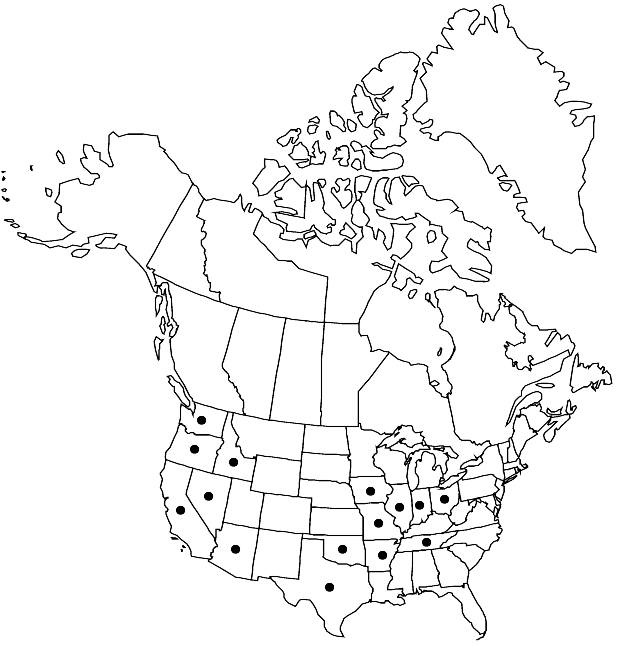Erysimum capitatum var. capitatum
Proximal leaves with mostly 3 (–7) -rayed trichomes adaxially. Flowers: petals usually orange, sometimes orange-yellow or yellow. Fruits usually latiseptate, rarely 4-angled. Seeds 2–4 × (0.8–) 1–2 mm; winged at least distally or, rarely, wing rudimentary. 2n = 36.
Phenology: Flowering (Jan-)Mar–Sep.
Habitat: Hillsides, open slopes, valley bottoms, alpine areas, deserts, woodlands, sandy mesas, chaparral clearings
Elevation: 0-1700 m
Distribution

Ariz., Ark., Calif., Idaho, Ill., Ind., Iowa, Mo., Nev., Ohio, Okla., Oreg., Tenn., Tex., Wash., Mexico (Durango), Mexico (San Luis Potosí)
Discussion
Of conservation concern.
Although its overall distribution is extensive, var. capitatum has been collected only sporadically outside the main range in western Idaho, western Nevada, and the Pacific states. There is some local differentiation in California that has been recognized formally. For example, some populations in the Mohave desert in Kern, Los Angeles, and San Bernardino counties, as well as disjunct ones in eastern San Luis Obispo County, differ from typical var. capitatum by having yellow petals, fruits to 3.3 mm wide, and seeds to 4 × 2 mm; these were recognized by G. B. Rossbach (1958) and R. C. Rollins (1993) as var. bealianum. Variety angustatum, which is highly localized in Contra Costa County and was recognized by both Rossbach and Rollins, differs from typical var. capitatum by having elongated (versus not elongated) woody caudices, 4-angled (versus latiseptate) fruits, and much-branched (versus moderately-branched or simple) fruiting racemes.
Selected References
None.
Lower Taxa
"wide" is not a number."elongated" is not a number."narrower" is not a number."thick" is not a number."dm" is not declared as a valid unit of measurement for this property."dm" is not declared as a valid unit of measurement for this property.